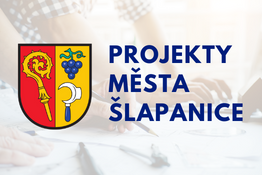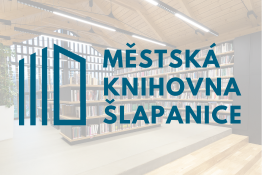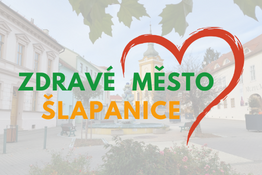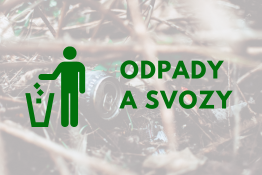Important people
 Jaromír Blažek
Jaromír Blažek
Jaromír saw the light of the world for the first time in Šlapanice on 29th June 1950. As a boy he used to play goal keeper and the football genes fell on his son Jaromír who plays goal keeper in Czech First League team Sparta Praha.
But Jaromír Blažek was finally charmed by a work with stone. In 1966 - 1970 he attended Art grammar school in Uherské Hradiště and studied in Jan Hrbata class special branch of sculpture and stone restoration.
By this time he follows the restoration work and also his own creations. With other sculptors he participates on realisation of stone reliefs all around the Czech Republic. In Šlapanice he made stone Monument for French Doctors to commemorate 200 year anniversary of Battle of Three Emperors. The monument is placed in the small park on the crossroad of Brněnská and Riegrova Street and was unveiled at the aniversary celebration on 2nd December 2005. He died on 25th February 2011 at the age of nearly 61 years.
 Zdeněk Dvořáček
Zdeněk Dvořáček
He was born in Šlapanice on 24th October 1929. His grandfather was brother of famous artist Jan Kalvoda who became Zdeněk‘s guru. He lived in Dlouhá Street where his parents hold a small grocery. In 1948 - 1949 he studied on Pedagogical faculty in Brno. After that in 1953 he graduated from University of Art in Bratislava. In December 1953 he was arrested and following year in March was convicted of high treason for five years and imprisoned in one of the heaviest prison – in uranium mines in Jáchymov. With decimated health and completely exhausted he returned to native Šlapanice in December 1958. Initially he was unable to obtain appropriate employment, so he worked for two years as an auxiliary worker and stoker in local company Dechtochema. Later he acquired position of graphic designer in design studio Grafia, np, Brno, where he worked until the end of life. He passed away early- on 16th January 1988.
Right from the beginning of artistic production Dvořáček blazed his own creative path, regardless of the adverse living conditions. His artistic expression got out of his university teachers in Bratislava soon. He was extremely diligent and hardworking. Since 1959, he regularly took part on exhibitions in Brno branch of the Association of Visual Artists.
In 1969, together with the R. Fila, B. Matal, O. Mikulášek and L. Vaculík he became a founding member of Association Q Brno. From thirty years of Master‘s artistic production there remains extensive work not only painting production but also graphic art (cycles Landscapes, Shields and totem poles, Zodiac). The images are thought over and made with a deep artistic sense of compositions in which the game of colours and shapes is apparent, also harmony, respect for the rules and the balance of nature.
 Jan Dvořák
Jan Dvořák
Chrysanthemums have been grown for 3,000 years in the Far East. Thousands of years ago, they were brought to Japan (in 1794 it become armorial flower of Japanese Emperor) and then they were transferred to Europe in the 17th century. At the end of the 18 century they were cultivated mainly in England and France.
Jan Dvořák spent over sixty years to cultivate them. He was born in Šlapanice on 15th March 1924. He learned to have a gardener degree and he had his dream since he was 12 year old. At that age he wrote: "My only desire would have been to discover something to lift the garden state to a higher level.”
In 1945 he worked briefly in Prague under the leadership of Antonín Brůha, the most famous chrysanthemums grower of that time, and Jan‘s dream got a specific form – to cultivate the original Czech chrysanthemums. From Prague he brought home with him 29 varieties of chrysanthemums and immediately started his breeding work. Other varieties he obtained from England, France and the Netherlands. He did not have a good start. The garden his father had leased from the Municipal Office had not been sold to him for years, although he asked to on several occasions. His garden shop was covered by the national administration in 1949 and JZD (main agricultural centre) or other employers did not support or understood his work as well. After all he was the first who managed to grow crossbred of large flower chrysanthemums from seeds. His first exhibition was in Prague in 1955. In 1961, he won the leadership of the international exhibition in Erfurt. In the years 1967 and 1969 he won two gold medals on Flora Olomouc exhibition for red, early and long flourishing chrysanthemum called Šlapanická Eliška (Elizabeth from Šlapanice). Jan liked to give maiden names to chrysanthemums with attribute Šlapanická (from Šlapanice). So, for example, he grew up Alice, Boženka, Drahuška, Jitka, Růženka or Vladěnka. He bred, however, also flowers called Red Flag-Feather from Šlapanice, Pink Feather let, Red Velvet, altogether more than 400 varieties.
One of his chrysanthemums was called Rafa and the breeder was suspected that he encrypted short word of Royal British Air force (RAF) in its name. The truth was simple, though. He was inspired by his dog’s name Raf.
For his relentless work he received many awards at home or abroad. In 1995 he was given thankful letter for his 50 year work by Minister of Agriculture Josef Lux.
I October 2004, he received South Moravian Region Award that is granted to outstanding contribution in a particular sector.
Jan’s life’s career closed down on 10th August 2006.
Antonín Fišer
Prof. MVDr. Antonín Fišer, DrSc. was born in Šlapanice on 22nd April 1934. In youth he used to be active sportsman (he played tennis, football, ice-hockey and basketball). He graduated at grammar school and started studying of Veterinary Faculty at Brno University of Agriculture. After being graduated (in 1958) he started to work as division veterinary gynaecologist and division vet in Liberec District. In 1963 he moved to Institute of Zoo hygiene at Veterinary faculty in Brno and started to work as lecturer on research and as a teacher as well. He graduated CSc. in 1992, doc. in 1978, DrSc. in 1992, professor of zoo hygiene in 1993. Antonín became a Head of Zoo hygiene Institute at Veterinary Faculty in Brno University in 1990. Since 1995 he has been an active member of the Academy of sciences in New York. Internships: 1974 - France study (ENV Lyon, ENV Toulouse, INRA Nouzilly près de Tours; 1979-1984 expertise residence – professor at University of Veterinary in Algiers (Alger ENV).
He is the author of many publications and textbooks for teaching of zoo hygiene. His professional work is quoted in foreign literature. For his work has received several awards from the Ministry of Agriculture and National Veterinary Administration. Even now in retirement age (since 2002) he is a member of the Bioclimatology Institute and Association of Veterinarians in Brno. He is interested in plying violin (for a long period of time he plays in Hellfert orchestra and also in dulcimer band Vrčka. His literal activity aims the field of regional history and the historical section of Association of vets. His name appears also in "Who's Who" among 5000 most important personalities of the Czech Republic, but also in international proceedings "OUTSTANDING PEOPLE OF THE 2OTH CENTURY", published by bibliographic centre in Cambridge in 2001.
 František Hamr
František Hamr
He was born on 15th October 1911 in Šlapanice. His initial occupation was metalworker. He was one of the leading innovators in Czechoslovakia, reflective reflectional plates on the road signs is his discovery. In his youth he addicted himself to music and sport – he used to play in local brass band and football and tennis for Šlapanice sport club. He loved gardening – he even breaded Hamr‘s apple. He passed away on 23rd November 1980 in his hometown.
 Stanislav Hanzl
Stanislav Hanzl
He was born on 9 October 1919 in Šlapanice in the family of cabinet – maker as the youngest of six children. Ever since his youth had shown an inclination of Art, his talent was inherited by grandfather, who dealt with lace embroidery on theologists‘garments, fables on national costumes and wedding dresses. After secondary school in 1934 the enlisted first experience with Graduated sculptor F. Prosecký in Brno, then he worked in the workshop of woodcarver J. Staněk in Bučovice for several years.
During the World War II, in 1942, he began studying at the School of Applied Arts in Brno, but after a short time was admitted to the Academy of Applied Arts in Prague (Prof. K. Dvořák). After the closure of universities through the Nacyst occupation he was totally committed to work in Berlin, where he tried to break away from in 1944 but was arrested by Gestapo and sent to enforced workrooms in Pardubice and Prague- Ruzyně.
Before his graduation in 1949, his major work was unveiled – on 7th November 1948 Memorial of Exemption in native Šlapanice, known as Rudoarmějec (Red army soldier). After his studies he became a member of the Union of Czechoslovak artists, and later Union of Fine Artists in Prague. Many other pieces of his work can be found in other Czech cities - in Usti nad Labem there is a monument Prokop Holý, in Šlapanice memorial on the grave of his parents. His best-known work is probably Leoš Janáček‘s statue in front of Brno theatre having the name of the composer. With his sculptors, Stanislav Hanzl successfully participated in many competitions and exhibitions. With his wife Jarmila, also an academic sculptor, he lived in Prague. They worked together on the restoration of the statues on Charles Bridge, Matyáš’s gate to Prague Castle, the castle Troja and Anežský monastery.
He died on 1st December at the age of 92 years.
 Arnošt Chalupa
Arnošt Chalupa
Painter and poet Arnošt Chalupa was born in 1925 in Nové Město na Moravě. When he was 10 years old he moved to Šlapanice with his family where he lived until he was 24. As he says home is where you pick up neighbours‘pears and where you have first dates. Arnošt Chalupa is a member of the Union of artists and regional artists Horácko club in Žďár nad Sázavou. He lives and works in Velké Meziříčí and to Šlapanice public he presented his work on exhibition in 2000.
 Josef Jarolím
Josef Jarolím
Teacher Josef Jarolím was born in Litomyšl in 1856 and after he passed an examination he became assistant teacher in Šlapanice in 1879. His parents and sister had moved there several years before. His sister Marie became an important cultural figure. Josef was not celebrated as teacher but as important cultural and educational worker of last third of the 19th century and first third of the 20th century. He was the leading force, the chairman, executive, or at least a member of the committee of many associations in Šlapanice(including the Museum Association, Ethnographic Department, Sokol, Kosmák, National Unity for Moravia, Svatopluk, Fortune, Reading - entertainment club, Business Savings Bank). He died in Šlapanice in 1940.
 Tomáš Kalina
Tomáš Kalina
He was born on 5th December 1874 in Šlapanice in the house number 193. His family had soon moved to the house number 243 in Kalvodova Street. After primary school and grammar school in Brno he attended Philosophical Faculty of Charles University in Prague. There he was a student of professor Golla, one of those who criticised originality of Manuscripts (hand written false documents exemplify, that Czech language had been used since medieval age). As a History and Geography professor he taught on grammar schools in Přerov, Uherské Hradiště and Brno. His scientific working and publishing was aimed to our history from 15th to 17th century.
He was also interested in the hometown history and his findings were published in the pre-war Town newsletter. At the end of an active teaching career he reached his fundamental work - publishes the Moravian Provincial boards from 1480-1619 and ranked among the most important historians in Brno in last century. He died in Brno on 13th June 1956.
 Alois Kalvoda
Alois Kalvoda
Born in Šlapanice, famous Czech painter, graphic designer and writer was born on 15th May 1875 as the eighth of ten siblings. His mother was only sixteen years old when she married a tailor educated in Vienna. They lived in the house which his mother was given from her father as dower. This house is located in Šlapanice about 50 meters from trolleybus number 31 terminus. His father established the tailors shop and sewed so well that he had acquired great reputation throughout the whole region. But one evening came dashing along strong wind. Alois and his father went out to cover the roof, which was being repaired, to protect the house against rain. But when they climbed up to the scaffolding, very strong wind drifted along and the scaffolding collapsed on the road. Nothing happened to the son, but his father suffered injuries and died on15th July 1884 at the age of 54. Mother with the family then had to sell the house they lived in. For some time they rented rooms from other people but finally they managed to buy a cottage in Dlouhá Street, where small Lojzík spent the remainder of his childhood. At that time, he started with creations of the first images.
When he was twelve he started to attend grammar school in Brno. He wasn’t very good at studying – he struggled a lot with Latin and Old Greek. But he was more interested in drawing and painting. Well, his family didn’t understand it. In addition, in the third class were his efforts to study weaken by his first love for a girl of wealthy German family. By way of her brother he sent her carefully sealed letter. Instead of the girl‘reply he was given back an envelope full of pieces of his original letter. Disappointed by love he decided to become an artist …..a painter. As sixteen year old he left to Prague as very talented artist and attended the Academy of Fine Arts at Professor Jůlius Mařák. Alois was influenced by his teacher’s style a lot. From studies he had to leave for military service in 1896.
In 1899 he cut adrift and bought himself studio in Prague – Vinohrady. In 1900 he leaves to study in Paris, 1901 in Munich, in 1898-1907 he became a member of many art and artistic associations. Significantly he ranked among the organizers of the creative life in the Club of Friends of Art, founded in 1900.
In the years 1902-1925 he held many exhibitions in both Bohemia and Moravia, but also around the world, e.g. in Munich, Berlin, Pittsburgh, Venice and New York. He illustrated books and magazines. His prints of Buchlov Castle were also published.
He used to e focused on theatre and built a positive relationship. On 1st September he played Lízal dramatic piece Maryša written by Mrštík Brothers. His brother Antonín and sister Josefka also played in that piece. While looking for young artists he founded his own Summer Painting School. Very talented Slovak painter Martin Benko graduated here as well. In preserved letters, Kalvoda rejoiced in sold paintings in the exhibition but financially he also remembered the school Matrices. In another letter, by contrast, he was angry, that students of his private art school in the studio stole his colours and brushes.
Kalvoda mostly made freshly illuminating landscape, ideas he took from surroundings of Radějv, Klobouky u Brna and Němčice in Blansko District. From 1902 he started composing also literary. The earliest- lectures on landscape issues. Then in 1911 he became an editor of the artistic revue „Dílo“(Creation). In 1912 he wrote and published composite book about violinist Ferdinand Laub. Alois gathered a lot of reminders about him and opened Laub‘s museum at Křivoklát castle. Kalvoda also tried to write theatre plays. The main heroes in dramas Marhovský and Hořec are artists. Another task was a book "My Friends Artists", where he remembers his deceased friends. His last work from1932 was the book "Memories" about his life and birthplace.
Into Sokolovna in Šlapanice he painted and gave as a present a picture of a great size called „Human Life“. Between two World wars this painting was assessed at 250 000 Czech Crowns (about 10 000 EUR). It survived up to these times though it deserves restoration intervention.
In 1923 the artist bought a chateau in Běhařov (village about 11 km south west from Klatovy), a simple building with no architectural peculiarity with triple gambrel roof and bulbous tower It had been rebuilding till 1927. He ran a painting school there. Shortly before his death he set up cinema free for children there. He died on 25th June 1934 at the age of 59 in Běhařov. According to his last will he was buried in Šlapanice in the family tomb that had already been prepared through his life. It was the work of sculptor Rudolf Březa, a native from Podolí. Kalvoda’s tomb - monumental and demanding- was hit y bomb at the end of World War II. After a half of century it has been restored and repaired.
Alois Kalvoda with his work ranked among the best landscape painters ant impressionists of first half of 20th century. He was a friend of many artists from different artistic spheres – brothers Wilhelm and Alois Mrštík, painter Joža and sculptor Franta Úprka, was close to Benko and Jurkovič, to Mareš - the director of the Brno Vesna, the elderly he caught in Prague artists such as Jan Herben, or Jakub Arbes in a pub The Golden Litre. Joseph Merhaut was the only one who didn’t accept Kalvoda‘s image as a gift: "I cannot accept it, thank you ... I like pictures myself, but my wife does not like them, because the dust settles on them. Neither Jožka Úprka succeeded wit her!!"
 Antonín Kalvoda
Antonín Kalvoda
He was born on 11th July 1907 in Šlapanice in the shoemaker family. He used to draw from childhood so well, that when Alois Kalvoda saw his work, he was recommended by him to Arts and Crafts School in Brno. Young Antonín attended the school from 1927 to 1928 and studied sculpture making with Professor Václav Vokálek. Then he moved to Prague to professor Otakar Španiel.
He addressed himself to minor figure and portrait statues and monuments design. He created the bust of the painter Kalvoda, T.G. Masaryk, Božena Němcová, after the Second World War he won the competition for the monument of Jiří Volker in Prostějov, in Blansko is to see his "Winning Red Army Soldier". He designed the statues for Slavín in Bratislava. He became a member of the Association of Visual Artists called Mánes, he had exhibitions at home and abroad (Stockholm, Vienna, Berlin, Moscow). Life career of this artist terminated in Prague on 4th December 1974.
 Josef Klíč
Josef Klíč
Violoncellist Josef Klíč (born 1976) is the lecturer of Faculty of Music at Janáček Academy of Music Art in Brno, a member of the Moravian Quartet and concert master of opera of Janáček Theatre in Brno. He comes from the Moravská Třebová. He lives in Šlapanice that is the birthplace of his mother. He graduated from Pardubice Conservatory (1990-1996), Janáček Academy of Music in Brno (graduated in 2000) and Japan's Toho Gakuen Academy in Toya. He is the awardee of many awards in Musician's Competition: 1995 and 1999 – 3rd place Beethoven's Hradec; 1998 – 1st place Yamaha, London, 1999 – 3rd place Concourse Moderne, Weimar; 2000 – 2nd price + price for the best performance of works of Leoš Janáček, also succeeded in competition of composers in Biel in Swiss. As a soloist, he also performs with orchestras, such as Moravian Philharmonics in Olomouc, Zlin Philharmonic Orchestra, Janacek Academic Orchestra or Academic Brno Orchestra. He often plays with Czech and foreign leading pianist and is fabulous to interprete current favourite composers. Classical music comforted listeners in many countries, including the Netherlands, Italy, Japan and Austria. Nevertheless he is also the author of his own compositions that cannot deny his experience with the current under-ground and alternative music.
 Jaroslav Kotulan
Jaroslav Kotulan
Former member of the Brno State Philharmonic, now a solo horn player of the orchestra in Basel, professor at the Staatlichen Musikhochschule in Freiburg im Br. Germany / 69 - 83 /. He won many 1 prizes (Wien, Prague, Geneva, Munich) in the international competition and teaches at master classes in Switzerland, Holland, Germany and the Czech Republic. He is a juror at many horn competitions all around the world.
 Cyril Kuklínek
Cyril Kuklínek
He married to Šlapanice in 1944 but was born in Práce on 5th September 1915. He was an employee of Brno, and later Civic printer and then head of bookshops in Typos Brno. His hobby was amateur drama that he used to play and direct. In particular, his operettas were liked. He did his best to bring Miroslav Horníček on stage of Sokolovna in Šlapanice He worked politically as well - in the years 1971-1981 he was a representative of ČNR (Czech National Council- now Parliament) focused on trade, services and transport, and in this office he had merited in the construction of new schools and the department store Družba in Šlapanice. He passed away on 28th May 1990. He managed to participate in the preparation of the first free elections.
 Ludvík Kunz
Ludvík Kunz
Doc. PhDr. Ludvík Kunz, CSc. was born on 26th August 1914 in Osíčko near Holešov. Because of the defect of vision and physical weakness Ludvík was not recommended for Teaching institute and learned to be brick mason. Only with the job for Construction Company, he succeeded to graduate from Teaching institute in Brno. After a few employments he finally got to Šlapanice. After war in years 1945-1949 he studied at the Philosophical Faculty of Masaryk University in Brno - section ethnography, music science and archaeology. In 1946 he studied playing bass at the conservatory and the following year he was employed in Moravian Museum. In 1961, he helped to establish ethnographic museums in Institute of noblewoman, of which he became the director. He is the author of nearly 400 journal, book and editorial publications in the field of musicology and ethnography. In these fields he was recognized as an expert at home and abroad. In 1968 he became laureate of Herder prices. He died on 20th May 2005.
 Karel Láznička
Karel Láznička
He was born on 12th June in Skorotice in 1928. From his youth he was attracted by all the sports - athletics, swimming, football, basketball, tennis. Most of all, however, he got maid about volleyball. When he was fifteen he was included in the selection of men played for Šlapanice, then with military service he entered the "big" volleyball. He became the backbone of ATK Prague (volleyball club in Prague) and from there it was then a short step on the way to the representation of the Czech Republic. More than a decade he played with the rampant lion on the chest, soon as the team captain. As a dreaded spiker he won with his team the title World Champion (1956, Paris) and double European champion (1955 and Bucharest in 1958 in Prague). He played 165 international matches. He also succeeded as a state coach. His team won the 6th place in the Olympics in Munich in 1972, 2 place in the European championship in the Netherlands, 3 place for the U.S. and the USSR at the World Cup in Japan in December 1985, and only for the worst ratio of sets.
From 1951 he appealed in Zbrojovka Brno (in 1968 Spartak Brno ZJŠ) as a playing coach, 6 times he won the national champion title (1965, 1967, 1969, 1971, 1972, and 1974). Zbrojovka team also won European Cup in 1968 and 1972, won silver for four times. The highest Czech volleyball league he played continuously in the years 1949-1968. With Zbrojovka he fare welled after incredible 39 years in April 1990. Karel Láznička can boast about titles like master of sport and master coach. In 1998 he received, along with eight other celebrities, Prize of Brno. Always put all his effort to every match, even friendly one. One of his classmates and teammates from Šlapanice Bořivoj Stříbrný said about him that there are two things that Karel Láznička can NOT do……to loose and to come to a standstill. Karel Láznička died on his 82nd birthday, 12th June 2010.
 Antonín Moskalyk
Antonín Moskalyk
He directed the popular series Četnické humoresky (Gendarmerie Facetiae) and Dobrodružství kriminalistiky (Adventures of Criminology), also the legendary television processing of Babička (Grandmother) with Jarmila Kurandová and Libuše Šafránková in lead and the fairy tale Třetí princ (The Third Prince). He was born in Khust in Carpathian Ruthenia on 11th November 1930. His father Peter was there as a special education teacher at secondary school. Antonín attended primary school in the region Nikola Šuhaj – the famous bandolero. After Munich Compact and the Hungarian conquest of the region in which they lived, Moskalyk and his family went through Austria to get to a collection refugee camp in Slatina. Hence the family moved to Šlapanice at the end of the war. They lived in Čechova Street 481/16, then in Nádražní Street 1023/67 and Jiráskova Street 725/105.
In 1950 Antonín graduated from grammar school in Brno Křenová Street, theatrical career he began in Bratislava. In 1958 he graduated from Director and film making studies at the Prague Academy of Performing Arts and that year he also joined with the Československá televize (Czechoslovak Television). At the same time he worked with Alfréd Radok at the National Theatre productions. He directed a venerable line of productions and films Dita Sachsová, Modlitba pro Kateřinu Horowitzovou, Kukačka v temném lese, Panoptikum města Pražského (besides the already mentioned as Dita Sachs, Prayer for Katherine Horowitz, Cuckoo in the Dark Forest, or a series Waxworks city of Prague with Jiří Adamíra starring Board Korejs. Moskalyk deservedly came to the Hall of Fame in 2005. The fate didn’t include him to finish the third series of television series Četnické humoresky (Gendarmerie Facetiae). He passed away in Brno on 27 January 2006 after a serious illness.
 Josef Stávek
Josef Stávek
Although he worked as vet, his hobby was collecting prehistoric archaeology and antiquities. He was born on 12th March 1874 in Čejkovice. After his studies in Uherské Hradiště and Vienna he settled in Šlapanice and began the research of prehistoric monuments. The first findings related to the Neolithic settlement were found in the line "Čtvrtky" near Horákov, in Puštor in Šlapanice, in Kobylnice and Telnice. Monuments of Unětice culture, from the time of the Gallic and Slavic settlement, were found there. He studied the barrows on Žuráň Hill and Hlásnice near Horákov. During the First World War he gained some findings from eastern Galicia. Since 1931, when he had his leg amputated so could not go into the fields, he loved the archaeology even more. As the first he pointed out the great archaeological wealth in Šlapanice region and saved many findings from destruction and most of them he gave as present to the Moravian Museum. He died on1st June 1938.
 Antonín Streit
Antonín Streit
Celluloid strip captured the theatre and film actor in minor roles in the films Řemeslo má zlaté dno (The Craft has a golden bottom) and Ulice zpívá (The Street Is Singing), he played the role of MD. Mark in Lamač‘s famous film with Vlasta Burian U pokladny stál (He stood at the box office) (1939). Antonín Streit was born in Jungmannova Street on 25th February 1908. He was amazed by the theatre. In Prague he studied Drama School of Karel Želenský (1926-1928) and from 1929 he acted in Košice theatre. Together with Karel Adámek he set up his own theatrical agency (1931 – 1939).He also played in Urania Theatre in Smíchov and toured also in Brno. In 1937 he was involved by Vlasta Burian and got an engagement for his own theatre in Vodičkova Street. Streit acted there until 1945, mostly the role of lovers. After the war Burian‘s theater was abolished and the actor became a farmer. He returned to native Šlapanice where he married the widow Anna Jarolímová and began to farm on grunnions. After the establishment of co-operative agriculture he became head of cattle breeding section. He died forgotten, alone and ill in 1994.
 Libuše Šafránková
Libuše Šafránková
Popular Czech theatre and film actress was born in Brno on 7th June1953. She spent her childhood and youth in Šlapanice went to school there. Meeting Marie Mrázková from Janáček Academy of Music Art, who taught movement education there, was fatal for her. Libuše studied drama at Brno Conservatory (1971) and already during her studies she performed in Mahen’s Theatre in Brno. She was chosen for the role Barunka in Antonín Moskalyk’s film Babička (Grandma), which was his best choice. After her studies ensued Prague's involvement, beginning in the Theatre Za Branou, then the Drama Club. She acted also in the National Theatre. In Prague, she met her husband, actor Josef Abrhám. They got married in 1976.
Perhaps the most famous is the role of Cinderella in director Vorlíček’s the fairy tale from 1973. She was excellent in many other roles - such as the young nixie in love Jana in the movie Jak utopit doktora Mráčka (How to drown Dr. Mráček), in the title role of the fairy tale Princ a Večernice (The Prince and Evening Star), the role of Princess Milena in the fairy tale Třetí princ (The Third Prince), bookseller’s wife and false waiter Vrána in Smoljak‘s comedy Chief, fleet!!!, Louka‘s girlfriend Klara in Oscar-winning Kolja. From soap opera roles were the most important those from Náhrdelník (Necklace) or Cirkus Humberto (The Humberto Circus). She also gave her voice to Fairy Princess Arabela.
In the second series of Arabela – Arabela se vrací (Arabela returns - 1990) acted the role of Arabela Libuše’s five years younger sister Miroslava. They played together in Malá mořská víla (Little Mermaid) (1975) - the fairy tale based on Andersen's famous fairy tale. Miroslava played other roles like Borůvka in the classical Klein's comedy Jak svět přichází o básníky (How the World Looses Poets) (1982). Her first movie character was Blažena in the film adaptation of a book Robinsonka by Marie Majerová. Te obsession for drama and theatre of both sisters was surely inherited from their father, who participated in the preparation of amateur performances in Šlapanice. Young Miroslava the played on stage of Sokolovna role of Hanička from drama Lucerna (Lantern) by Jirásek. Libuše acted in the early days of her successful career on the same planks.
 Vladimír Ustohal
Vladimír Ustohal
Doc. Ing. Vladimir Ustohal, CSc., was born on 3rd February 1938 in Brno, but in early childhood was added up to Šlapanice. As a university educationalist and researcher of field of material engineering he contributed in the writing of many textbooks and lecture notes, but his interests were far more versatile. He was interested, among others, in military and regional history. He is the author of the book Napoleonská návrší (Napoleon‘s hills) (1995), along with Josef Kopecký Vladimír issued several monothematics workbooks dealing with history of Šlapanice region for Homeland study society in 1999-2001. In 2005 was published a book about occupation and liberation in Šlapanice region in 1939-1945. On the field of the war he also worked in the book Tunely pro messerschmitty (Tunnels for Messerschmitts), which captures the agitated history of the factory Diana, located in tunnels in Tišnov. For many years he was a member of the editorial board of Šlapanice newsletter and with dozens of articles he contributed to it.
His lifelong passion was travelling. Even in distant regions he was searching for fellow-countrymen and so created two books reflecting their life abroad Tahitská odysea and Češi na Tahiti a Markézách (Tahitian Odyssey and Czechs to Tahiti and The Marquesas Islands. His productive life blacked out on 27th December 2005..
 Alois Veselý
Alois Veselý
Brno Conservatory Professor Alois Veselý was born in Šlapanice on 31st October 1928. He came from a musical family and his grandfather was the bandmaster of Hrabálek‘s brass band. He graduated from the Conservatory where he studied clarinet playing and conducting in the years 1951-1952. Four years later he graduated from Janáček Academy of Music Art in Brno Then he became a member of the National Philharmonic in Brno and wood-wind quintet. Since 1962, for following 26 years, he worked as choirmaster of Vach’s Moravian Teachers Choir. He also became a long-term conductor of Helfert’s orchestral association Brno. He also led Moravian Chamber Orchestra; musical ensemble consisted of students of Brno Conservatory, where he was educationalist since 1981. He worked and lived in Brno, where he died on 1st August 1996.
 Emanuel Vlček
Emanuel Vlček
Cultural and Educational worker and amateur historian Emanuel Vlček was born in Šlapanice on 23rd March1911. From his youth he was interested in the history of his native town. He was also the author of musical and cultural Chronicle of Šlapanice. Between the 30s and 90s last century he published his findings gained by studying archival materials and registration of contemporaries in the regional press. He filled his notations with drawings of disappeared corners. He conducted the choir of Orel, was a member of the Šlapanice Choir Association and taught playing the violin and stenography. Initially he worked as a bank clerk, but for their religious beliefs he was arrested and then placed into the industry. Emanuel died on 8th October 2005.
 Jaroslav Zeman
Jaroslav Zeman
Doc. DVM. Jaroslav Zeman was born in Šlapanice on 30th May 1928. After graduating from grammar school in Brno he decided to follow in the footprints of his father, the district veterinarian. At the Veterinary University in Brno, graduated in 1953, he then worked at the Institute of zoo hygiene in Brno as a lecturer. In 1965 he became a member of the Czechoslovak bioclimatological association, in 1970 register and in 1977 president of animal bioclimatology section. He thought at the vet university in Brno, worked on research and a was accomplished expert in the field of zoo hygiene. Jaroslav was the author of more than 100 scientific and specialistic publications, co-author of 5 books and a number of textbooks. For a long time he was a member of the Board of the National Veterinary Administration of the Ministry of Agriculture. In the place of residence he was in his youth a talented sportsman (hockey, football, tennis). From 1960 he devoted himself to local politics (Member of the Town Council, Chairman of the Youth and Sports Departement, President of the Press and Information Departement and the Chairman of the Editorial Board Šlapanice newsletter). He died on 4th April 2003.
 Páter Josef Zeman
Páter Josef Zeman
His parents were peasants and lived in 233/19 Brněnská Street. His father served as mayor of the village for several years. Josef was born on 8th August 1898 as the youngest of six siblings. In the native Šlapanice he attended elementary school and went to the seminary in Kroměříž. During his studies in 1914, both parents died. He as grammar school student was taken to the World War I front. In 1918 he entered the theology in Olomouc and after the first year he left to Paris to prepare for the missionary task. He completed his studies in China, where he was ordained a priest and began to spread the Christian faith. He returned home to rest up after a severe illness in 1936. During his time in China he was sending home a lot of letters addressed to family, friends and editorial of various newspapers and magazines. This correspondence was published as a book Hlas Číny (The Voice of China) (1932) and Deset let za čínskou zdí (Ten Years behind the Great Wall of China) (1937). The last letter came in 1950. The year before that there in China started the persecution of missionaries by the communist regime. Priest Zeman was sent to forced labourers in the prison camp. That definitely undermined his health and he died on 27th August 1952 in a hospital in Hong Kong. He is reportedly buried in Shanghai. His symbolic grave though is placed at cemetery in Šlapanice, near the main cross.
 Václav Zeman
Václav Zeman
He was a holder of a memorable name that belonged to a number reeves and mayors in Šlapanice, and the first-ever figure form this town who sat on the bench in the Parliament. Originally a farmer was born on 29th September 1849 in Šlapanice. As thirty- three year old he joined the local politics and after six years he became mayor of his native township and stayed in the office for 13 years. This however did not end his political rise. In December 1906 the National Catholic Party noted down a great success in national elections to the Moravian Land tag and one of the seats fell to Václav Zeman. He carried out the mandate by the end of 1912.
He accomplished a lot for Šlapanice. He worked for Readers and entertainment club, the theatre club called Kosmák, was the Deputy Mayor of Sokol and Chairman of a local school board. He also worked hard on the establishment of municipal public libraries; tirelessly he searched for funding for the construction of school building for young farmers in Nádražní Street and helped to transform the former textile factory in 40 Riegerova Street to school building (1898-1901). Mayor Zeman saw the greatest future of Šlapanice in prosperity of agriculture and business, so he supported the interests of peasantry. Like every politician he had his enthusiastic supporters as well as sworn enemies, but he definitely enrolled the memory of his fellow citizens. He died on1st April 1920. His peasant homestead in Palackého Street was for a long time called "At the Parliament Members"










